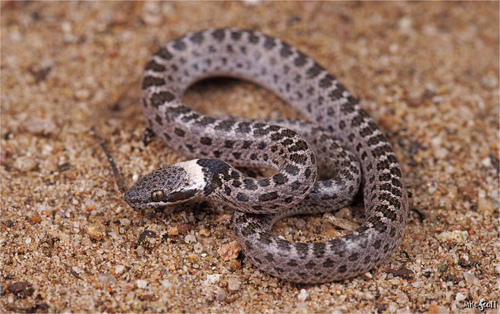
Night Snake
The elusive Hypsiglena torquata, or night snake, roams the arid landscapes of North America under the cloak of darkness. With its subtle, mottled appearance and harmless bite, it quietly maintains balance by preying on small reptiles. A true master of stealth in the desert ecosystem.
12 years
Lifespan
Length: 41 cm
Size
Brown, Grey, Dark
Color
Low
Aggression
Least Concern
Conservation Status
Stable
Population Trend
Characteristics
Hypsiglena torquata, known as the night snake, inhabits arid and semi-arid regions in North America. It has a slender body, typically light gray or brown with dark blotches. Nocturnal and secretive, it primarily preys on lizards and amphibians. Its mild venom is not dangerous to humans.
Distribution Range of the Night Snake
Hypsiglena torquata, commonly known as the night snake, is native to the southwestern United States, including states such as California, Arizona, Nevada, Utah, and extending into parts of Texas and New Mexico. Its range also extends into northern Mexico, including regions such as Baja California and Sonora.
Night Snake's Habitat
Environmental Conditions
Hypsiglena torquata typically inhabits arid and semi-arid regions, including deserts, scrublands, and rocky hillsides. These environments are characterized by low precipitation, high temperature variations between day and night, and sparse vegetation. The species is often found in areas with sandy soil or loose rock, which provide suitable microhabitats for shelter and foraging.
Ecological Niche
The night snake occupies an ecological niche as a nocturnal predator, feeding primarily on small vertebrates such as lizards, amphibians, and small mammals. Its activity patterns and cryptic coloration help it avoid predators and effectively hunt prey under the cover of night. The species is well-adapted to its dry, rocky environment, exhibiting behaviors and physiological adaptations that allow it to conserve water and maintain homeostasis in extreme conditions.
Copyright @ Nature Style Limited. All Rights Reserved.
 English
English